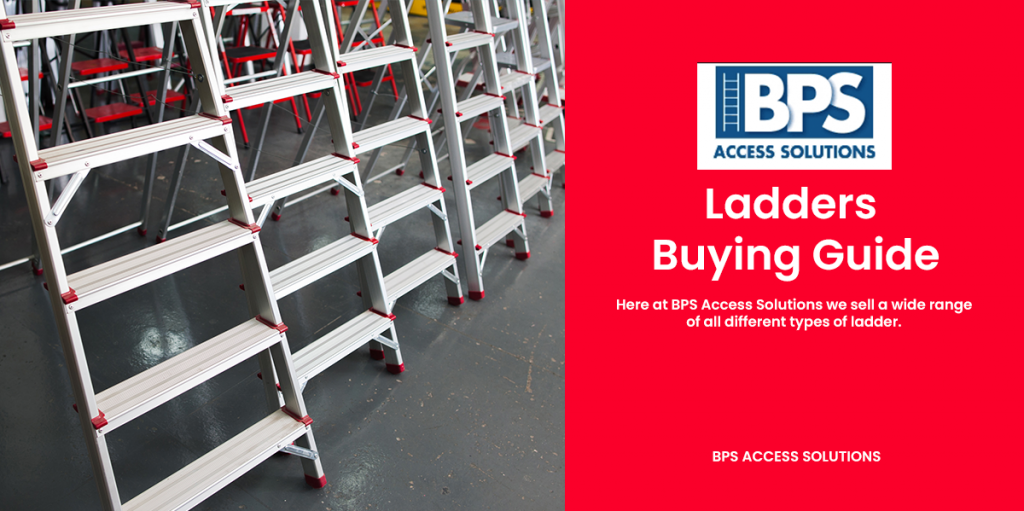Ladder buying guide
Ladders come in all shapes and sizes, and luckily there’s a ladder out there for pretty much every possible scenario, both professional and non-professional. Ladders have been perfected over time to the point where, nowadays, they can serve many different purposes thanks to borrowed features and designs.
If you’re looking to buy a new ladder, you probably have a pretty good idea of what you want to use it for. But it’s not always easy to tell which type of ladder is the best choice for that task, especially given the sheer number of different ladders on the market. To make the right purchase you need to understand what the various different types of ladder do and what sort of attributes you should be prioritising in your circumstances.
Below we’ll run you through the variety of different ladder types you have to choose from, and explain a bit about what they’re good at. Armed with this knowledge, you should be able to make a much more informed decision about which ladder is best for you.
Safety as a priority
Before any other considerations, safety should always be your number one priority when it comes to working with ladders and other height access equipment. Working at height is inherently dangerous, and it remains one of the leading causes of workplace deaths, even after many years trying to raise public awareness of the issue.
As a result, you should never neglect safety as one of the first things you think of when working with ladders. All ladders and other height access equipment must legally adhere to European and UK safety standards. Each ladder will come with various safety ratings which outline their maximum load and various other work factors. Despite this, some ladders simply aren’t designed to be used in certain situations. Uneven floor surfaces or support structures can easily cause a ladder to fall when in use, so you need to ensure you are using the right ladder for the job.
Extension ladders
As their name suggests, the main feature of extension ladders is their extendable frame. By combining two frame sections which slide past each other and lock into place, extension ladders can provide additional height in a smaller frame. This makes them ideal for transportation in a van or other vehicle.
When it comes to work applications, extension ladders are ideal for use against upright structures like walls or trees. Because they only have two legs, extension ladders can be used almost completely upright, as long as they are connected to the structure they are leaning against in some way. While not having four legs might seem like a disadvantage, in many scenarios where access is all is that is required, having only two legs is an advantage. If you’re considering an extension ladder, make sure you’re confident that you wouldn’t be better served by a combination ladder instead.
Step ladders
Step ladders are one of the most common types of ladder due to their suitability for many low-risk everyday tasks. Most step ladders provide only minimal height, making them unsuitable for tasks which require much more than a metre or two of additional height. Step ladders’ main feature is their four legs, which allow them to stand upright without support from other structures. As a result, a step ladder can be set up in the middle of a room, something that a two-legged ladder could never do on its own. When it comes to everyday activities like changing a lightbulb, there isn’t a much better option than a step ladder. However, if you need additional height, a combination ladder or scaffold tower would be a more suitable choice.
Combination ladders
Combination ladders combine the features of the two ladder types mentioned above to create the ultimate ladder from a versatility perspective. Combination ladders are the one-size-fits-all ladder, being used by tradesmen in all sort of fields daily. Thanks to their extending frame, combination ladders can provide additional height compared to a standard step ladder. At the same time, due to the fact that combination ladders have four legs, they can stand on their own without additional support. For many home users, a combination ladder would be the most sensible choice of ladder because it kills a number of birds with one stone. If you don’t plan on using your ladder regularly, it makes sense to own one which can do as many jobs as possible when the time comes.
Specialised ladders
There are a number of different specialised ladders which are specially designed to carry out particular functions. Take the roof ladder, for example, which features large hooks on one end to keep it attached to the crest of the roof. On the other end it has wheels which allow the user to move it along the roof when needed.
Another specialised type of ladder is the telescopic extension ladder, which packs away to occupy a tiny space compared to how big it can be when extended. Each rung section on a telescopic extension ladder folds away inside another, meaning that the entire ladder can be packed away into a bag.
Scaffold towers
Scaffold towers, while technically not ladders, perform much the same function as ladders. Scaffold towers were borne out of a need for a stronger and more durable platform on which workers could carry out two-handed tasks. While a scaffold tower may be a bit overkill for use in many situations outside of a worksite, they offer an unbeatable level of safety and stability when it comes to working at height.
Make sure you know what you need
You should now know some of the pros and cons of the various different type of ladder, but knowing exactly what you need can sometimes be more difficult. You may know what task you need to carry out now, but in the future you may need something else. It wouldn’t make sense to buy a whole new ladder in the future, so aim for something versatile that will afford you more wiggle room.
If you would like to know more about the various different ladders we have in stock, please get in touch with BPS Access Solutions.
No related posts.



